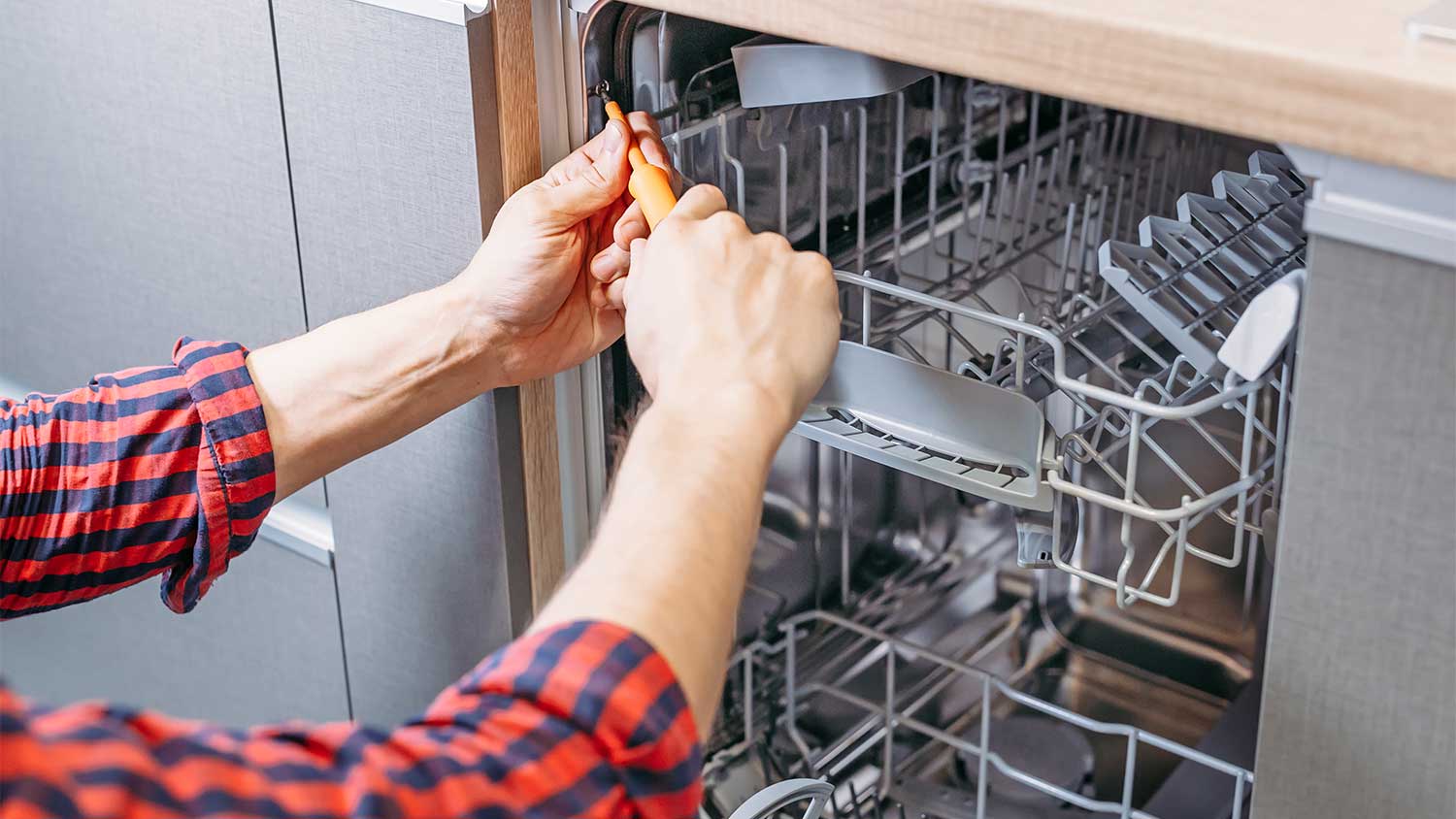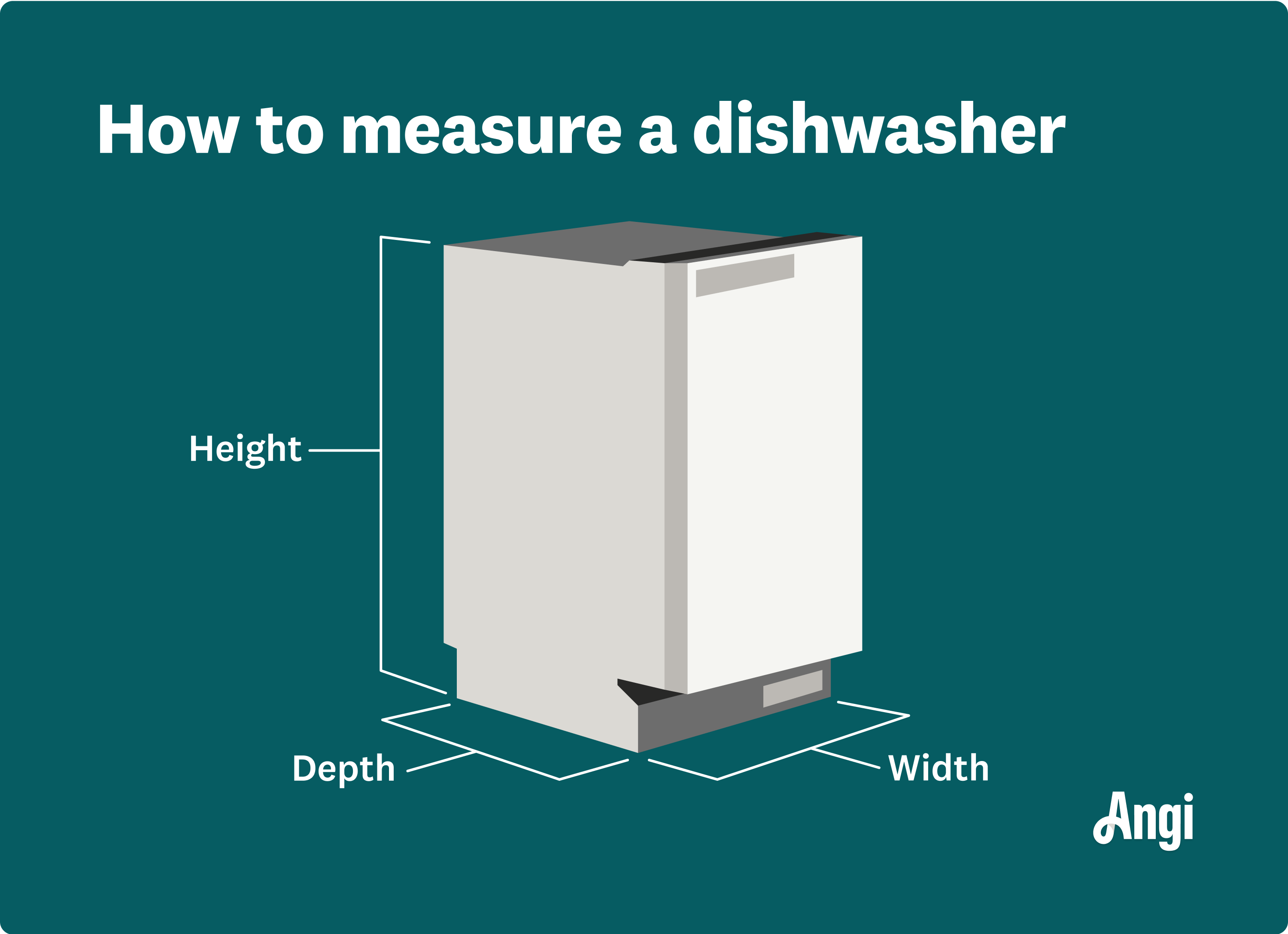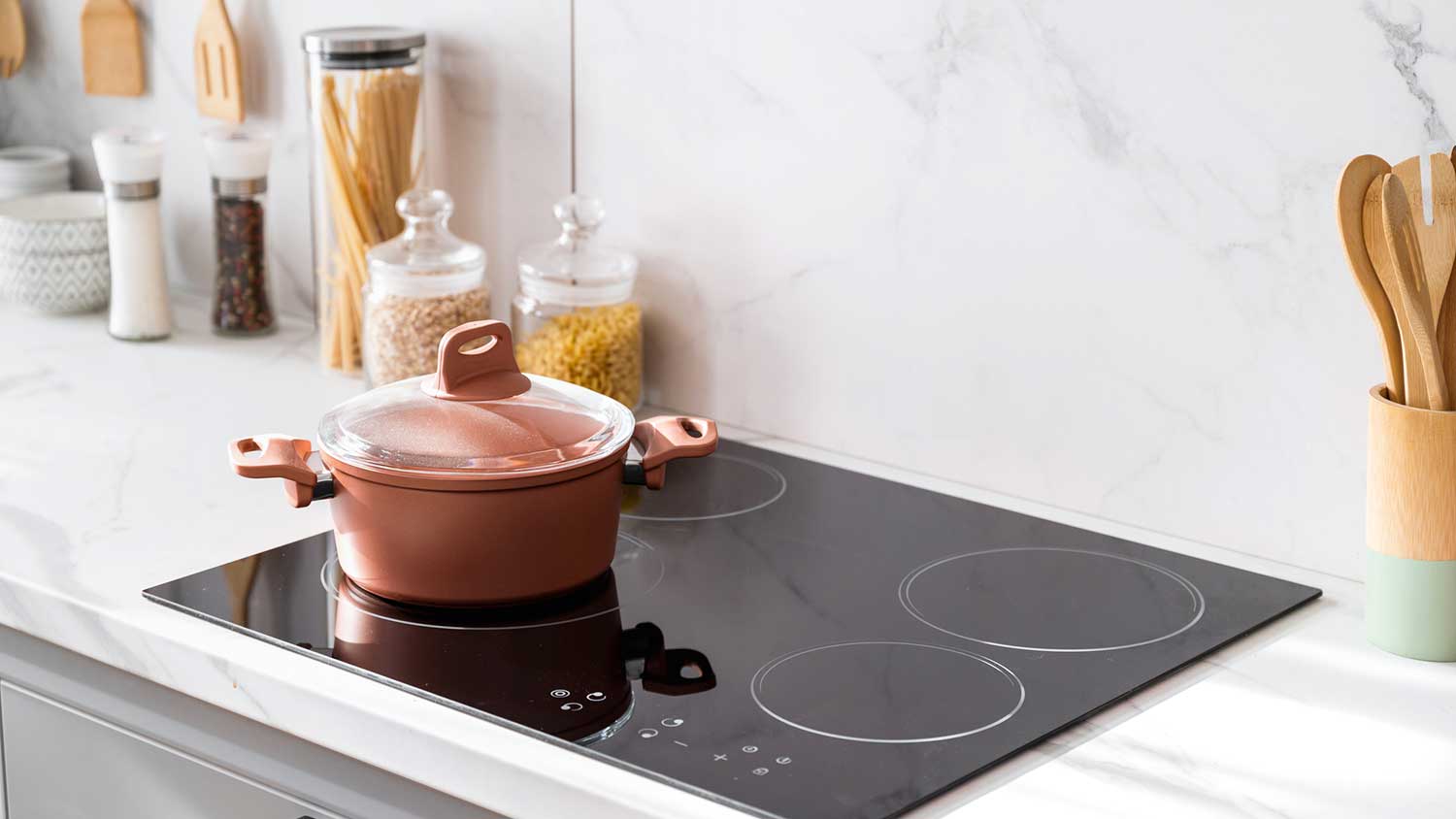
Get expert insights on dishwasher repair cost, including average prices, key cost factors, and tips to save money on repairs.
One simple but necessary step for a functional kitchen


Integrating a dishwasher into your kitchen requires careful planning and precise measurements. A well-fitted dishwasher not only enhances the functionality of your kitchen but also contributes to its overall aesthetic. Whether upgrading your kitchen or installing a new dishwasher for the first time, understanding how to measure the space accurately is the crucial first step. Read on to learn how to measure dishwasher space to ensure a seamless integration that aligns form and function.

Before you begin measuring dishwasher space and clearing the area of obstructions, it's helpful to understand average dishwasher sizes. When shopping for built-in dishwashers, manufacturers offer models that fit most cabinet openings. The standard dimensions are 24 inches wide, 24 inches deep, and 35 inches high, but some brands provide dishwashers in various widths and depths.
Appliances are not a one-size-fits-all solution. Whether you’re replacing an existing appliance or installing a new one in an updated room or home, it’s extremely important to properly measure the space it’s going to live—and to consider factors like doors, drawers, etc.
Some manufacturers also produce oversized, compact, and portable dishwashers for homeowners with different needs. Non-standard types of dishwasher sizes include:
Oversized: Oversized dishwashers match the depth and height of standard units, but they’re far wider, measuring 30 to 42 inches in width. These large-capacity models can hold bigger loads.
Compact: Compact dishwashers also match the depth and height of a standard dishwasher, but they’re noticeably narrower, about 18 inches in width. These models work well in a small kitchen.
Portable: Portable dishwashers don't require a cabinetry fit and tend to be slightly bigger than standard dishwasher sizes. However, some models are smaller. The width of a portable dishwasher ranges from 18 to 30 inches, the height ranges from 35 to 37 inches, and the depth ranges from 26 to 30 inches.
Learning how to measure for a dishwasher is simple. Have a tape measure and notepad handy, and you’ll be ready to go.

Using a tape measure, determine the distance between the two vertical sides of the designated space. Measure from the inner edges of the cabinets or walls that will flank the dishwasher. Take measurements at multiple points, including the top, middle, and bottom, as there can be slight variations in width. Record the narrowest measurement on paper or your phone's notes app.
Understand that even though the standard dishwasher width is 24 inches, the actual size nearly always is closer to 23-1/2 inches. This gives you a fraction of an inch on both sides to smoothly slide the appliance into place.

Determine the vertical distance from the floor to the underside of the countertop or cabinet with your tape measure. Take measurements at multiple points, including the left, center, and right sides of the opening, to account for irregularities. Record the smallest measurement to guarantee sufficient clearance for the dishwasher's installation.
Leaving a small fraction of an inch between the bottom of the countertop and the top of the dishwasher is helpful to simplify sliding the unit into place. Many dishwashers have slightly adjustable feet on the bottom, so you can adjust the size of the gap between the top of the dishwasher and the bottom of the counters as you’re doing the installation.

Take the tape measure to determine the distance from the back wall to the front edge of your cabinets or countertop, where the dishwasher's door will align when closed. Measure at various points along the width of the opening, as walls and cabinetry might not be perfectly uniform. Recording the shortest measurement ensures your new dishwasher aligns perfectly with your kitchen setup.
Most people want the front of the dishwasher to be flush with the kitchen cabinets if possible. The installation looks cleaner when everything aligns. You also reduce the risk of someone bumping into the front of the dishwasher because it sticks out a couple of inches farther than the cabinets.

To ensure the best functionality for your dishwasher, measure the clearance around the door. The door should open seamlessly without obstructing other areas in the kitchen. Use the tape measure to determine the span between the front of the cupboard and the adjacent wall or cupboard. For standard dishwashers, manufacturers typically recommend leaving 21 to 27 inches between the edge of the dishwasher's door and open cabinets.

If you're planning to install a non-traditional dishwasher, such as a drawer, countertop, or portable dishwasher, the steps vary slightly:
A drawer dishwasher uses a slide-out drawer rather than a door that flips down for loading and unloading dishes. Some people put them in a kitchen island. They are usually smaller than a traditional dishwasher, preserving space in a small kitchen.
Drawer dishwashers are available in multiple sizes. You’d measure for a drawer dishwasher using the same techniques as you would for a standard dishwasher. Measure the height, width, and depth you have available before shopping for the model you want.
To determine space for a countertop dishwasher, assess the available countertop area to ensure a snug fit. Clear an area around the kitchen sink where you plan to place the countertop dishwasher. Measure the width of the countertop from the edge of the sink to any obstacles like walls or adjacent appliances. This measurement provides the maximum width that the countertop dishwasher can occupy.
Next, measure the depth from the back wall to the edge of the countertop, taking into account any protruding handles or faucets that might affect placement. Check the height between the countertop and the underside of any upper cabinets to ensure enough clearance for the dishwasher's smooth operation.
To measure the space for a portable dishwasher, consider its dimensions and the connections it needs. Start by measuring the width of the available area where you intend to place the portable dishwasher, ensuring enough room for the unit. Next, measure the depth from the back wall to the front edge of the counter, accounting for any handles, knobs, or other obstructions that could affect its placement. It's essential to ensure the portable dishwasher fits comfortably within the space.
Measure the height of the space, considering the size of the countertop or any overhanging cabinets, for proper clearance. Remember to leave room for any necessary hoses, cords, and connections at the back of the dishwasher, as portable models require access to water and drainage sources during operation.
Learning to measure dishwasher space is simple enough for even the most inexperienced DIY homeowners to complete. Once you've recorded your accurate measurements, you can make informed shopping decisions for your new appliance. From there, you may require the assistance of a dishwasher installation professional.
Installation may be included or added to your final cost depending on where you purchase your appliance. The average range for the dishwasher purchase and dishwasher installation cost is between $1,000 and $1,500.
From average costs to expert advice, get all the answers you need to get your job done.

Get expert insights on dishwasher repair cost, including average prices, key cost factors, and tips to save money on repairs.

If your dated appliances don't impress, it's time for a refresh. We break down the cost to refinish appliances, including ovens, refrigerators, washers, and more.

Discover the average cooktop installation cost, key price factors, and tips to save. Learn what impacts your total cost and how to budget for your new cooktop.

Wondering who to call to hook up a gas dryer? Call a licensed plumber or contractor to hook up your gas dryer and make sure it's venting properly.

Whether a small or deep scratch, follow these simple steps to remove scratches from stainless steel to keep your appliances shining.

The type of washing machine that’s best for you will depend on the size of your laundry room, the number of people in your household, and your budget.